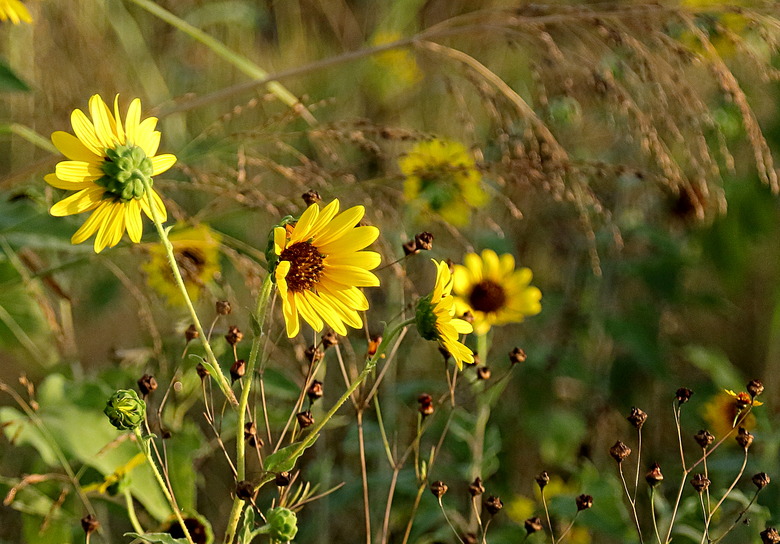Native Plants Of The Texas Coastal Plains
The Texas coastal plain is comprised of varying elevations levels, precipitation levels and soil types. Each of these factors has a direct impact on the types of vegetation that grows in each sub-region of the Texas coastal plain. Climates change drastically from one sub-region to the next. Southeastern sub-regions support low-lying, water-loving plants while ecosystems closer to the Rio Grande river sustain larger, drought-resistant plants.
Coastal Prairie Plants
Coastal Prairie Plants
Gulf coastal prairies constitute the majority of the central and southeastern Texas coastal plain. This ecosystem supports grasses and flowers that thrive on high precipitation levels. The predominantly flat region's annual rainfall is 56 inches per year, which soaks into a dense top-layer of clay soil that inhibits the root formation of larger plant species. Tall grasses and flowers are the predominant vegetation of this sub-region. Blue stem, bulrush, Eastern gamagrass, switchgrass and yellow indiangrass are a few grass varieties that populate the gulf coastal prairie. Flowers such as the Texas coneflower, swamp sunflower, indian blanket, mexican hat, goldenrod, black-eyed susan and blazing star add a burst of color amongst a landscape of green and golden grasses.
Marsh Plants
Marsh Plants
Texas is scattered with estuaries and wetlands, most of which empty into the gulf coast. The area where the Texas coastal plain meets the ocean consists of marshes with poorly-oxygenated, saline soils. This sub-region is characterized by a considerable amount of standing water, which is usually comprised entirely of salt or is a combination of fresh and salt water although some bodies of water are entirely fresh. This ecosystem supports salt-water plants such as:
- shoalgrass
- turtlegrass
- sedge
- rush
- cattail
- mangrove
- pickerelweed
- common reed
According to the Texas Parks and Wildlife website, common marsh flowers are water hyacinth, beach morning glory, white waterlily and rose mallow.
Sandsheet Plants
Sandsheet Plants
The Texas sand sheet results from sand blown inland from the Gulf of Mexico. The sand that populates this sub-region, which lies just north of the Rio Grande River, constitutes the majority of the soil that makes up the area. Larger trees as well as shrubs are able to populate in this subtropical climate, while tall grasses remain scattered throughout. Prickly pear and mesquite occur frequently together. Seacoast blue stem is common, as is gulfdune paspalum, camophor daisy and indiangrass. Oak woodlands pepper the landscape and are often intermixed with low-lying vegetation and thorny shrubs.
Brush Plants
Brush Plants
Texas brush lands lie East of the Rio Grande river basin within slopes formed by the river. Recurring drought and sporadic rainfall greatly influences the vegetation of this sub-region, which predominantly consists of low-lying, small tree forests. The dense under-stories support the growth of thorny shrubs and succulents, while open areas experience short wildflower blooms caused by sudden torrential downpours. Common trees are ash juniper, Montezuma bald cypress, pecan, desert willow and honey mesquite. Agave, yucca, autumn sage and Barbados cherry grow amongst brush while wildflowers such as Englemann daisy, purple phacelia and heartleaf hibiscus grow on open terrain.
Cite This Article
MLA
Conner, Jessica. "Native Plants Of The Texas Coastal Plains" sciencing.com, https://www.sciencing.com/native-plants-texas-coastal-plains-7476944/. 22 November 2019.
APA
Conner, Jessica. (2019, November 22). Native Plants Of The Texas Coastal Plains. sciencing.com. Retrieved from https://www.sciencing.com/native-plants-texas-coastal-plains-7476944/
Chicago
Conner, Jessica. Native Plants Of The Texas Coastal Plains last modified March 24, 2022. https://www.sciencing.com/native-plants-texas-coastal-plains-7476944/
